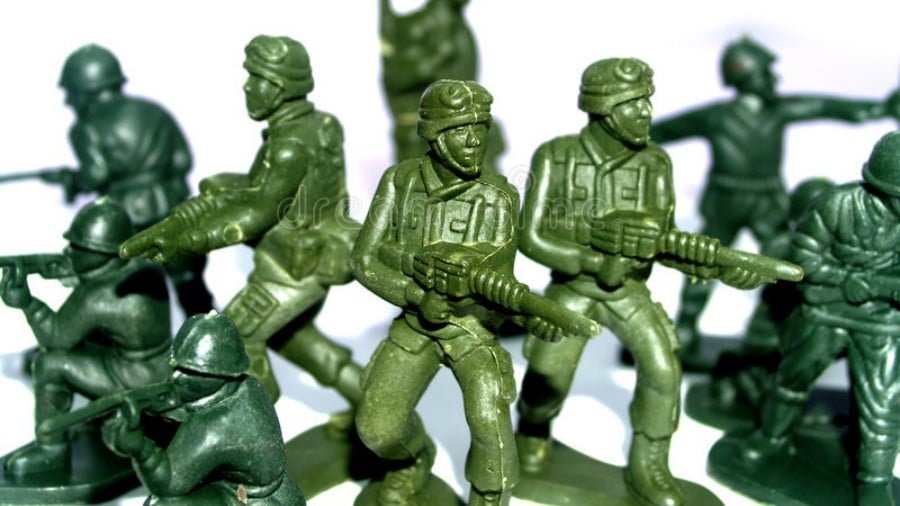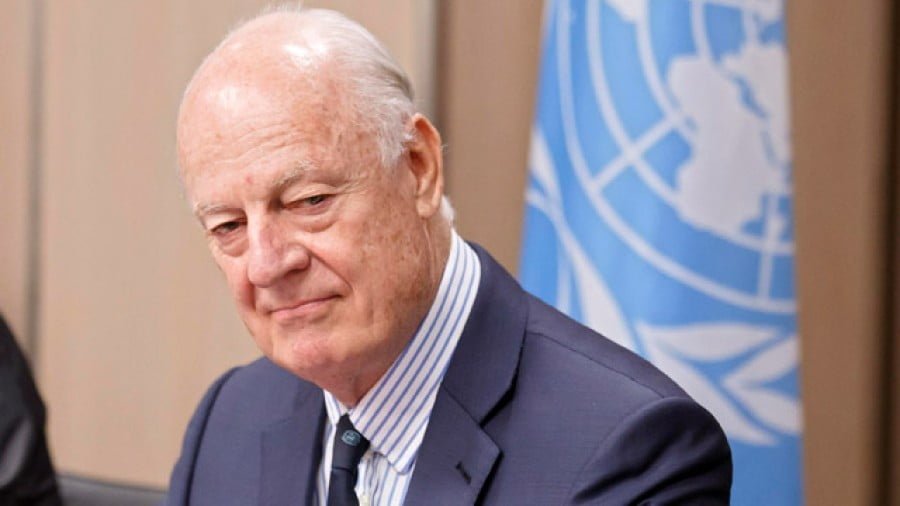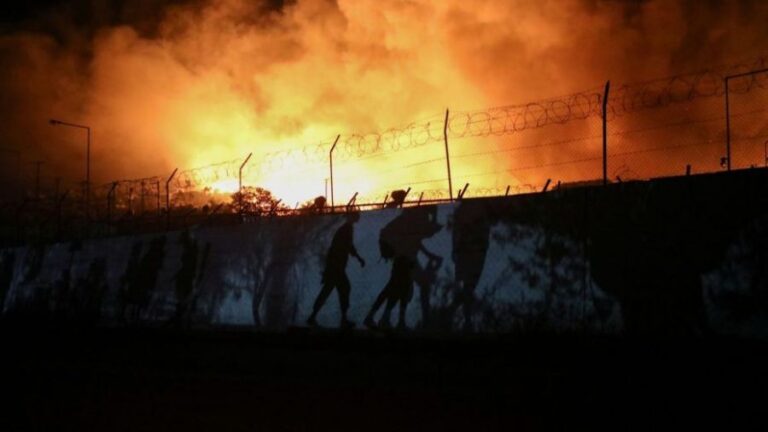Scenario Forecasting: Here’s How Russia Could ‘Pull a Crimea’ in Belarus
President Putin’s reaffirmation of Russia’s CSTO mutual defense obligations to Belarus has led to speculation that he might be considering a repeat of the Crimea scenario to (re)unify the two countries as a political solution to the latter’s ongoing Color Revolution crisis. Should he decide upon such a dramatic course of action, which would in that scenario be driven more by situational inertia than any “master plan” on his part (though not necessarily on Lukashenko’s), then here’s how it might all play out…
Media Literacy Is A Must
Scenario forecasting is an art of political science that aims to speculate how various visions of the future might unfold. Those with low media literacy might be misled by either their own “wishful thinking” or other people’s criticisms into wrongly thinking that it amounts to “news”, whether of a “positive” or “fake” nature. That’s not the case whatsoever at all, but it’s important to clarify as much prior to the reader proceeding further in case they’re under any false assumptions about the intention of this piece. The present article is nothing more than a speculative “what if” in regards to the question that’s swirling around the Mainstream and Alternative Media nowadays about whether or not Russia will “pull a Crimea” in Belarus as a political solution to the latter’s ongoing Color Revolution crisis. The reason for this heated discussion is President Putin’s reaffirmation over the weekend of Russia’s CSTO mutual defense obligations to Belarus during the second phone call that he had in as many days with his “Union State” counterpart.
Russia’s “Wish List”
The author wrote about the latest developments in bilateral ties in his piece that was published on Sunday about “Russian-Belarusian Relations: Back To Being Brothers?” which should be read first in order to bring one up to speed about Moscow’s evolving strategic calculations. In brief, although “Lukashenko Has No One To Blame But Himself For Belarus’ Color Revolution Unrest” as a result of his failed “balancing” act between Russia and the West, Moscow’s views towards Minsk changed considerably over the weekend after the latter released 32 suspected Russian mercenaries from custody. Russia also realizes that Belarus is now very well aware of the corner that it backed itself into and is thus much more interested in accepting Moscow’s terms for further “Union State” integration than it was at the beginning of the year. This has created a window of opportunity for President Putin to potentially fulfill his “wish list” for bilateral relations that he sent to his Belarusian counterpart following his re-election last week, which specifically includes “closer cooperation within the Union State, extensive integration within the Eurasian Economic Union and the CIS, and military and political links within the Collective Security Treaty Organisation.”
The Big Picture
What the Russian leader most likely has in mind is Lukashenko requesting everything that he suggested as part of a comprehensive relief package for the purpose of “regime reinforcement” (the opposite of regime change) that would be gradually implemented in phases, not any sort of swift Crimean-like (re)unification operation that will almost certainly trigger a new wave of sanctions and destroy any hope for reaching a “New Detente” with the US, to say nothing of dangerously leading to a new military standoff with NATO in the worst-case scenario. That being the case, it’s also possible that President Putin might be “tricked” into doing exactly what he doesn’t intend to by the inertia of events, especially if Lukashenko desperately stages an incident with NATO in order to serve as the pretext for compelling Russia to militarily assist his country at the risk of losing “face” and potentially even Belarus itself if it doesn’t. It’s that “trigger event” which serves as the basis for the following scenario forecast about how Russia could end up “pulling a Crimea” in Belarus. Without further ado, that speculative series of events will now be elaborated on, though the author once again feels it necessary to remind the reader that this isn’t a prediction nor “fake news” but simply a thought exercise.
Military Maneuvers
Lukashenko warned over the weekend that not only is NATO threateningly building up its forces along the Belarusian border (a charge that the alliance denied), but that “They see the western borders of Belarus here, near Minsk, as it was in 1939, and not near Brest”, strongly implying that Poland seeks to annex the western half of modern-day Belarus that it controlled during the interwar period. There’s no evidence of either other than his own words and it’s telling that neither Russian officials nor the country’s media have loudly echoed his concerns. This makes one wonder whether he’s just hyping up an external threat for the purpose of both distracting his people with a patriotic emergency but also potentially to compel Russia into “pulling a Crimea” in Belarus on the basis that its mutual defense ally’s national security and territorial integrity are threatened. In response to those aforementioned threats, Lukashenko announced that the Belarusian military will carry out snap exercises in Grodno region along his country’s frontier with “Lublin Triangle” members Poland and Lithuania from 17-20 August. RT reported that these will be “focused primarily on air defense” but also involve “artillery and missile troops”.
The Tripwire
Belarus has the right to stage military exercises anywhere on its territory, but its decision in the current context of the ongoing crisis is extremely dangerous. Lukashenko knows that NATO won’t attack Russia’s CSTO mutual defense ally since that would serve as the tripwire for Moscow to militarily intervene and potentially turn their long-fearmongered nightmare about its alleged plans to “annex” Belarus into a reality, but that’s precisely what the Belarusian leader might be hoping he can have happen if he plays his cards “right” considering how increasingly desperate his domestic position has become. In this scenario, Lukashenko provokes a military crisis with NATO in the coming days or simply invents one in order to serve as the pretext for publicly requesting Russia’s emergency military assistance under the CSTO. Moscow would then be faced with the dilemma of either losing “face” and potentially even Belarus itself (should the crisis be real) if it doesn’t heed its ally’s call, or getting pulled into a serious security situation against its own choosing by the inertia of events if it complies. What might initially just be the symbolic emergency dispatch of some military forces to Belarus’ NATO border could quickly grow into something much more since NATO would inevitably escalate the situation in response.
Mission Creep
The entrance of Russian military forces into Belarus under the pretext of defending it from conventional NATO threats would almost certainly be exploited by Lukashenko to help him with “Democratic Security” (counter-HybridWarfare) operations against the ongoing Color Revolution. It’s obvious enough that foreign forces stand to benefit from his ouster, and the imposition of an anti-Russian government in Belarus could arguably have conventional national security implications for Moscow should Lukashenko’s “successor(s)” demand that the Russian military shut down its missile attack warning facility and submarine communications one in the country when the agreement pertaining to their operation expires in June 2021. With Russian troops already in Belarus to defend it from NATO, it would then be much easier to pressure them to expand their mission to include “Democratic Security” responsibilities despite the risk that it would be extremely counterproductive for them to do so. The two militaries already train real closely so there isn’t anything that the Russian one can do which the Belarusian one can’t such as arresting the Color Revolution’s core members and cohorts and quelling riots. These actions also shouldn’t ever be done by foreign forces since it undermines the domestic one’s legitimacy.
The Intervention Exception
It should be said, however, that there are times when the commencement of a “Democratic Security” intervention by foreign forces is extremely useful for restoring law and order, but that moment hasn’t yet arrived in Belarus. Rioters and/or military defectors would have to seize control of military bases and/or entire cities, which would represent the transformation of the Hybrid War into a conventional one where the assistance of friendly foreign forces could help the domestic ones stabilize the situation, but only after they’ve proven themselves unable to do so on their own. The argument can be made that Russia wouldn’t want to wait for that scenario to pass and potentially lose the strategic initiative, but the counterargument is that it succeeded fairly well enough in Syria after that happened so there’s no reason why it couldn’t replicate its success in Belarus if need be. In any case, the involvement of Russian military forces in supporting Belarus’ “Democratic Security” operations prior to the previously mentioned circumstances would be mostly to send a political message, though it could dangerously be misportrayed as an “occupation” and thus exploited to “legitimize” terrorist attacks against Russian troops which could then potentially create a new cycle of unrest.
Lukashenko’s Fallback Plan
With the above insight in mind, it’s also possible that Lukashenko could force President Putin into ordering the Russian military to participate in Belarusian “Democratic Security” operations shortly after entering the country in response to Minsk’s request for CSTO support to deter NATO even if he doesn’t initially want to. All that Lukashenko have to do is “stand back” and “passively facilitate” the situation getting out of control to the point where Color Revolutionaries and/or military defectors seize control of military bases and/or cities, all under the pretext of “mistakenly” enacting a “more peaceful” and “hands-off” approach to the crisis following international condemnation (including from Russian media) about the security forces’ “heavy-handed” tactics. Lukashenko knows that President Putin wouldn’t “let Belarus fall”, especially not while the Russian military is already present there to deter NATO. He also probably wouldn’t be able to resist the grassroots pressure to “do something” to prevent this seemingly impending “loss” of a “fraternal nation” that’s part of the same “Union State”. The military resources would already be “conveniently” in place to stop that dark scenario from materializing so there’s no way for him to “save face” if he ordered them to “stand down”.
Rushing Through A Referendum
Continuing with the scenario, the next logical step would be to rush through a referendum if Russia commits its military to intervene in such a sensitive domestic situation in the neighboring country that’s also part of the same “Union State”. The basis would already be established that Belarus’ security is indivisible from Russia’s own by virtue of the fact that such a “Democratic Security” operation would be commenced in the first place so it would naturally follow that the two should formally (re)unite in order to help one another even more once the crisis is over. Furthermore, Russia’s been wanting Belarus to intensify its integration through this framework for the past year already so it conforms to one of Moscow’s main foreign policy priorities even if it’s not unfolding in the peaceful context that the Eurasian Great Power originally anticipated. It’s therefore unlikely that the Kremlin would pass up such an opportunity, especially since Lukashenko would presumably be supportive of it under these circumstances since he’d have already wagered that he has no choice otherwise he risks being overthrown by the Color Revolutionaries that he himself encouraged (both earlier this summer and then by “passively facilitating” local takeovers to trigger Russia’s “Democratic Security” intervention).
The “Ummah Pivot”
There’s little doubt that most Belarusians would vote for (re)unification with Russia during such a national security emergency so the scenario supposes that this comes to pass. It would then proceed largely along the lines of the post-Crimean one where Russia came under heavy US-led Western sanctions, though this time they might be much more intense than before. Just like back then, Russia would be compelled to search for new partners, but this time its strategic focus would be different. Russia already succeeded in cultivating excellent relations with China but also with its rapidly emerging rival India in the past 6 years since the Ukraine Crisis, which was the result of Moscow’s very careful (albeitimperfect) “balancing” act. Nevertheless, it’s impossible for any country to indefinitely “balance” between two rivals, let alone do so perfectly, so while Russia would probably rely more on both of those Asian Great Powers in response to more Western pressure upon it after (re)unifying with Belarus, it would urgently need to seek out a “third force” to maintain its “balancing” act between those two. This could foreseeably result in Russia doubling down on what the author earlier described as its “Ummah Pivot” of intensifying relations with Pakistan, Iran, Turkey, the GCC, and Egypt.
Concluding Thoughts
This concludes the scenario forecast about what would most likely have to happen for Russia to “pull a Crimea” in Belarus. Nobody should interpret this as a prediction, but simply as a thought exercise intended to explore the various dynamics influencing the course of events. It’s unlikely that Russia will willingly commence such a move, hence why it would probably have to be compelled into doing so by an increasingly desperate Lukashenko who might have convinced himself that he has no political future except as a “regional governor” or some other functionary (potentially much higher though more symbolic) in a more formalized “Union State” between the two nations. If he hypes up NATO’s threats to his country, then Russia might dispatch troops in order to deter it, which he could then “trick” into “mission creep” for “Democratic Security” purposes that could quickly lead to a referendum on Belarus joining the Russian Federation considering the pressing external (NATO) and internal (Hybrid War) threats to its independence which also have direct national security implications for Moscow as well. Faced with an onslaught of sanctions in the aftermath of the (re)unification referendum that might follow, Russia would have little choice but to turn towards its Chinese and Indian partners together with doubling down on its “Ummah Pivot” in order to better “balance” between them.







